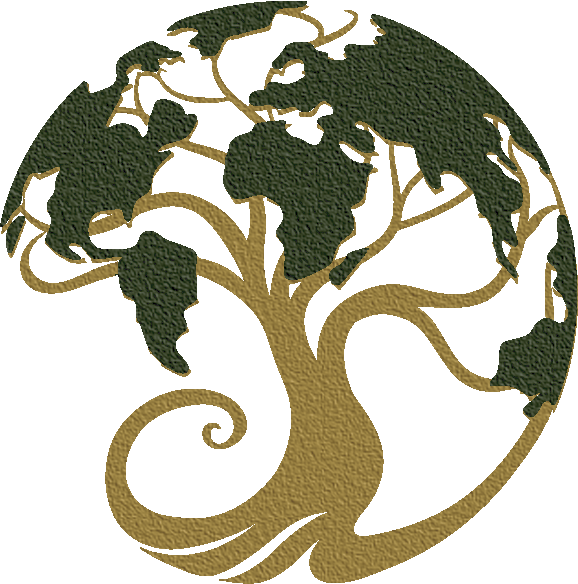The Top 3 Signs of Imbalance from the Tongue
What Your Tongue Reveals About Your Inner Ecology
Shantree Kacera, RH, DN, Ph.D.
“The map of the tongue is not just anatomical, it is emotional, elemental, and energetic.”
~Dr. Vasant Lad, BAMS, MASc
In Ayurveda, the tongue is a living map of the entire body, an extension of the digestive tract, nervous system, emotional body, and elemental terrain. Every groove, colour, coating, and contour offers real-time insight into your state of vitality or dis-ease.
This ancient diagnostic art, refined over thousands of years, empowers us to catch imbalances before they take deeper root. It shows us where the fire of digestion is weak, where toxicity has accumulated, where the nervous system is frazzled, or where blood and vitality may be lacking.
Below are the top three signs of imbalance that show up on the tongue, and how you can begin to realign.
1. Tongue Coating: A Window Into Toxicity and Digestion
A thick or discoloured coating on the tongue is one of the clearest signs of Ama, the sticky residue of undigested food, unresolved emotion, and metabolic waste that disrupts the body’s natural intelligence.
A white, thick coating suggests a buildup of Kapha, thick congestion, lethargy, sluggish digestion, or respiratory mucous.
A yellowish coating reveals Pitta imbalance, likely inflammation, excess heat, acidity, or liver congestion.
A patchy or uneven coating may indicate erratic digestion from Vata imbalance, where the fire of transformation is flickering or scattered.
Check-In: Observe your tongue first thing in the morning, before brushing or scraping. Has the coating changed overnight? Is it thicker toward the back (colon area)? These are key clues.
Remedy: Begin with daily tongue scraping, warm water sipping, and a simple, digestible diet. Herbal support might include trikatu for Kapha, coriander and aloe for Pitta, and ginger or fennel for Vata.
2. Cracks and Fissures: The Deep Imprint of Depletion and Trauma
Cracks on the tongue often speak to the deeper reservoirs of the body, long-term depletion, trauma, and stress held in the tissues.
A central vertical crack may reflect spinal tension, nervous system exhaustion, or long-standing Vata imbalance.
Cracks at the tip can reveal emotional strain, grief, or heart imbalance.
A deep, dry tongue with multiple cracks often signals dehydration, systemic depletion, and a need for rebuilding life-force from the roots.
Check-In: Is your tongue dry or moist? Are the cracks deep or shallow? Do they correspond to your current or long-standing symptoms?
Remedy: This is a call to slow down, nourish deeply, and replenish. Prioritize ojas-building foods, warming dates, warm seed or nut milk tonics, and adaptogenic herbs like ashwagandha or shatavari. Grounding practices such as self-oil massage and breathwork are essential.
3. Colour and Tone: The Pulse of Your Blood, Heat, and Circulation
The colour of the tongue offers a direct glimpse into the quality of the blood, liver function, and inner fire (agni).
A pale or overly smooth tongue often indicates anemia, low vitality, or digestive weakness, especially Vata-Kapha types.
A red tongue, especially at the tip, can reveal inflammation, anger, or high Pitta.
A purple or bluish tongue reflects blood stagnation, liver congestion, or impaired circulation.
Check-In: Does the colour of your tongue match how you feel? Is your energy warm and circulating, or stagnant and cold?
Remedy: For pallor, focus on iron-rich, grounding foods and tonics like nettle, beetroot, and sesame. For excess heat, cool with rose, coriander, aloe, and coconut. For stagnation, think of movement, circulation-enhancing herbs (like turmeric or cayenne), and lymphatic massage.
Your Tongue is a Sacred Messenger
Learning to read your tongue is like learning to read the poetry of your own body. It helps you recognize the early signs of imbalance, tune into your inner ecosystem, and respond with presence rather than reaction.
In a world that teaches us to override our instincts, this ancient practice reconnects us to a more intuitive and embodied way of knowing. Whether you are a wellness practitioner, herbalist, yoga teacher, or on a journey of deepening self-awareness, this is a powerful tool for holistic well-being.
“Tongue diagnosis is not about labelling disease, but about seeing the whole person—what is weakening them, what is nourishing them, and where they are in the rhythm of change.”
~Dr. David Frawley (Vamadeva Shastri)
Join the Ayurvedic Tongue Diagnosis Course
Learn the Art of Reading the Body Through the Tongue
This engaging, in-depth course is rooted in 50-years of being in private practice experience and traditional Ayurvedic wisdom. You’ll learn how to:
☐ Identify key markers of Vata, Pitta, and Kapha imbalance
☐ Map organ systems and emotional imprints on the tongue
☐ Distinguish between constitutional traits (Prakriti) and current imbalances (Vikriti)
☐ Use tongue diagnosis in daily life and your work with clients
☐ Create practical and personalized recommendations based on what you see
“The tongue never lies. It’s one of the most honest storytellers of the body.” ~Shantree Kacera
Whether you’re looking to deepen your clinical skills or cultivate a deeper understanding of your health, this course offers a rare integration of science, subtle energetics, and embodied wisdom.
Early registration is now open. Space is limited for a more intimate learning experience.
Click here to learn more and register
Or to book a Complimentary Clarity Chat with Shantree

